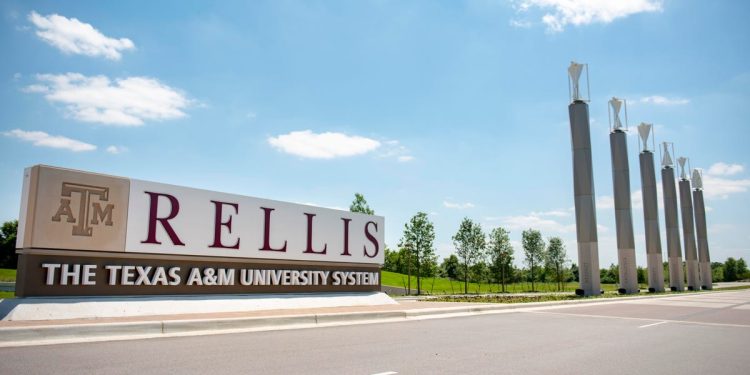- Four nuclear startups plan to build power plants at Texas A&M University.
- Texas officials see nuclear as a way to meet skyrocketing electricity demand from AI data centers.
- The university is seeking $200 million from state legislators to help finance the nuclear projects.
Texas’ largest university plans to be a test bed for small nuclear reactors that could help meet the state’s skyrocketing electricity demand from data centers, population growth, and extreme weather.
The Texas A&M University System on Tuesday said it’s leasing land to four nuclear startups that specialize in small modular reactors, or SMRs, which are about one-third of the size of traditional nuclear power plants. The startups aim to build commercial reactors that can provide power for the university and the Texas power grid, officials said.
To date, no commercial SMR has been built in the US and only a few exist in Russia and China. Development is picking up speed, especially as tech giants search for low-carbon, around-the-clock electricity for data centers with the computing power for artificial intelligence. But it’s unclear when the first SMR might come online in the US, with forecasts ranging from five to 15 years.
“Hopefully we’re the first of many places that have a proving ground for new energy technologies,” Joe Labd, vice chancellor for research at Texas A&M, told Business Insider. “Energy demand, not just in the state of Texas, but across the nation and globally, is rising at a very fast pace, particularly as companies construct data centers.”
Texas’ main grid operator forecast that power demand will nearly double by 2030, driven mainly by requests to plug into the grid from data centers and crypto-mining facilities. A similar trend is playing out in states like Virginia, Arizona, and Nebraska.
The arrival of the Chinese artificial intelligence company DeepSeek — which promised to be a cheaper and more energy-efficient model — cast some doubt about AI-driven electricity demand and sent nuclear stocks plunging on January 27. They’ve since recovered, buoyed by President Donald Trump’s formation of Stargate, a joint venture between Oracle, OpenAI, and SoftBank to build AI data centers, including in Texas.
Even before the announcement of Stargate, Texas was already dealing with a stressed power grid. Its vulnerabilities were exposed during a 2021 winter storm that froze gas production, power plants, and wind turbines and left millions of people without heat and power for days. At least 200 people died.
The promise of small nuclear
Since then, Texas officials have been trying to shore up the grid — including by making the state a leader in advanced nuclear power. Texas Gov. Greg Abbott in November outlined a strategy with seven recommendations, including a new state office and energy fund dedicated to supporting advanced nuclear projects.
The Texas A&M University System
Proponents of SMRs argue that they could be a source of 24/7 power without producing greenhouse gas emissions, unlike gas plants that — at least in the short term — are going to be built to power data centers. Smaller reactors could be deployed faster and cheaper than traditional nuclear power plants, which have been plagued by cost overruns and delays. The country’s most recent large nuclear plant, built by Georgia Power, arrived seven years late and $17 billion over budget.
However, some academic critics worry that SMRs will have a similar fate and leave taxpayers on the hook. In 2023, the startup Nuscale canceled what was set to be the first commercial SMR project in the US after utility customers backed away due to rising costs and delays. The project was backed by a $1.4 billion cost-share deal with the federal government. Environmental groups are also concerned about the radioactive waste that nuclear power produces and where it will be stored.
For its part, Texas A&M is partnering with four other nuclear startups: Kairos Power, Natura Resources, Terrestrial Energy, and Aalo Atomics. The university has asked Texas legislators for $200 million for its new energy proving ground.
The proposed site at Texas A&M is large enough to accommodate multiple SMRs with a combined output of more than one gigwatt, university officials said. That is enough to power about 200,000 homes. Until now, there hasn’t been a suitable site for building clusters of nuclear reactors that can supply the power needed for AI innovation and other projects, officials said.
Mike Laufer, co-founder and CEO of Kairos Power, told Business Insider the company is still evaluating how many reactors it might build at the Texas A&M site. In October, Kairos also struck a deal with Google, which said it plans to buy power from multiple SMRs.
Douglass Robison, founder and President of Natura Resources, said the company plans to build one commercial reactor.
“We need to demonstrate that you can license an advance reactor,” Robison said. “That’s been one of the big concerns, particularly from the investment community.”
Both Kairos and Natura have received construction permits from the Nuclear Regulatory Commission for demonstration SMRs, but not commercial-scale plants.
- Four nuclear startups plan to build power plants at Texas A&M University.
- Texas officials see nuclear as a way to meet skyrocketing electricity demand from AI data centers.
- The university is seeking $200 million from state legislators to help finance the nuclear projects.
Texas’ largest university plans to be a test bed for small nuclear reactors that could help meet the state’s skyrocketing electricity demand from data centers, population growth, and extreme weather.
The Texas A&M University System on Tuesday said it’s leasing land to four nuclear startups that specialize in small modular reactors, or SMRs, which are about one-third of the size of traditional nuclear power plants. The startups aim to build commercial reactors that can provide power for the university and the Texas power grid, officials said.
To date, no commercial SMR has been built in the US and only a few exist in Russia and China. Development is picking up speed, especially as tech giants search for low-carbon, around-the-clock electricity for data centers with the computing power for artificial intelligence. But it’s unclear when the first SMR might come online in the US, with forecasts ranging from five to 15 years.
“Hopefully we’re the first of many places that have a proving ground for new energy technologies,” Joe Labd, vice chancellor for research at Texas A&M, told Business Insider. “Energy demand, not just in the state of Texas, but across the nation and globally, is rising at a very fast pace, particularly as companies construct data centers.”
Texas’ main grid operator forecast that power demand will nearly double by 2030, driven mainly by requests to plug into the grid from data centers and crypto-mining facilities. A similar trend is playing out in states like Virginia, Arizona, and Nebraska.
The arrival of the Chinese artificial intelligence company DeepSeek — which promised to be a cheaper and more energy-efficient model — cast some doubt about AI-driven electricity demand and sent nuclear stocks plunging on January 27. They’ve since recovered, buoyed by President Donald Trump’s formation of Stargate, a joint venture between Oracle, OpenAI, and SoftBank to build AI data centers, including in Texas.
Even before the announcement of Stargate, Texas was already dealing with a stressed power grid. Its vulnerabilities were exposed during a 2021 winter storm that froze gas production, power plants, and wind turbines and left millions of people without heat and power for days. At least 200 people died.
The promise of small nuclear
Since then, Texas officials have been trying to shore up the grid — including by making the state a leader in advanced nuclear power. Texas Gov. Greg Abbott in November outlined a strategy with seven recommendations, including a new state office and energy fund dedicated to supporting advanced nuclear projects.
The Texas A&M University System
Proponents of SMRs argue that they could be a source of 24/7 power without producing greenhouse gas emissions, unlike gas plants that — at least in the short term — are going to be built to power data centers. Smaller reactors could be deployed faster and cheaper than traditional nuclear power plants, which have been plagued by cost overruns and delays. The country’s most recent large nuclear plant, built by Georgia Power, arrived seven years late and $17 billion over budget.
However, some academic critics worry that SMRs will have a similar fate and leave taxpayers on the hook. In 2023, the startup Nuscale canceled what was set to be the first commercial SMR project in the US after utility customers backed away due to rising costs and delays. The project was backed by a $1.4 billion cost-share deal with the federal government. Environmental groups are also concerned about the radioactive waste that nuclear power produces and where it will be stored.
For its part, Texas A&M is partnering with four other nuclear startups: Kairos Power, Natura Resources, Terrestrial Energy, and Aalo Atomics. The university has asked Texas legislators for $200 million for its new energy proving ground.
The proposed site at Texas A&M is large enough to accommodate multiple SMRs with a combined output of more than one gigwatt, university officials said. That is enough to power about 200,000 homes. Until now, there hasn’t been a suitable site for building clusters of nuclear reactors that can supply the power needed for AI innovation and other projects, officials said.
Mike Laufer, co-founder and CEO of Kairos Power, told Business Insider the company is still evaluating how many reactors it might build at the Texas A&M site. In October, Kairos also struck a deal with Google, which said it plans to buy power from multiple SMRs.
Douglass Robison, founder and President of Natura Resources, said the company plans to build one commercial reactor.
“We need to demonstrate that you can license an advance reactor,” Robison said. “That’s been one of the big concerns, particularly from the investment community.”
Both Kairos and Natura have received construction permits from the Nuclear Regulatory Commission for demonstration SMRs, but not commercial-scale plants.









